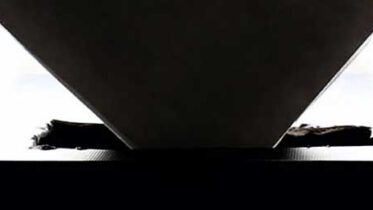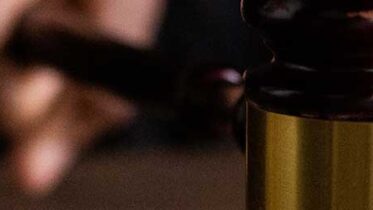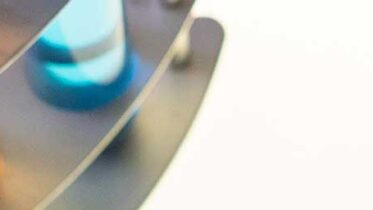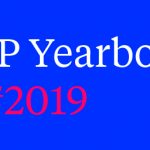SPC practice and the Santen judgement (C‑673/18)
- 13 August 2020
- Articles
Oftentimes, decisions of the Court of Justice of the European Union (CJEU) hit the Industrial Property pool like a stone, creating waves that propagate in space that deeply influence IP practices in the EU member states. Such was the case of the recent Santen judgement (C‑673/18).
Background
Up until as recently as July 2020, many SPC applications were granted in view of the Neurim judgement of the CJEU (C‑130/11), making Neurim a benchmark decision since July 2012. Neurim ruled that the existence of a previous market authorisation for an active ingredient, or combination of active ingredients, could not prevent the grant of a SPC for the same active ingredient(s) with a new granted market authorisation and a basic patent for a different therapeutic application, provided that said application is within the limits of the protection conferred by the basic patent, thus tying the market authorisation to the scope of the basic patent. Since then, Neurim created jurisprudence for similar cases and allowed Pharma companies to expand their portfolio of protected medicinal products.
However, Neurim was not immune to controversy, since several EU member states had different interpretations of this judgment in the light of Regulation (EC) No 469/2009. Consequently, a SPC application for a previously approved active ingredient with a new therapeutic application could have different outcomes depending on the member state. In the case of Portugal, the IP Office adhered to the Neurim interpretation and granted many SPC applications that fell within its meaning.
Neurim also opened the door for many discussions revolving around the concepts of “product” and “first market authorisation” as defined in Article 1(b) and Article 3(d) of Regulation (EC) No 469/2009, and if a second application of an already approved active ingredient rendered its market authorisation a “first” for that application according to Article 3(d).
Article 1 (b) of the Regulation in force discloses that a ‘product’ means the active ingredient or combination of active ingredients of a medicinal product. Article 3 (b) and (d) conditions the grant of a SPC to a “valid authorisation to place the product on the market as a medicinal product has been granted in accordance with Directive 2001/83/EC or Directive 2001/82/EC, as appropriate”, and that said authorisation must be “the first authorisation to place the product on the market as a medicinal product”.
Even though several requests for clarification of this matter have been submitted to court over the years, while no other decision was made, Pharma companies benefited greatly from the Neurim judgment and SPC applications increased drastically since then.
The case
Upon finding itself in the midst of a dispute regarding the French Nacional Institute of Industrial Property’s rejection of Santen’s SPC for ciclosporin for use in the treatment of keratitis on the basis of a previous market authorisation from 1983 for the same active ingredient, the Paris Court of Appeal referred two questions to the CJEU, compelling the court to take a clear stance once and for all.
The CJEU was requested to provide interpretation regarding Neurim on two accounts:
- Must the concept of a “different application” within the meaning of Neurim be interpreted strictly, or interpreted broadly;
- Does the expression “[application] within the limits of the protection conferred by the basic patent” within the meaning of Neurim, mean that the scope of the basic patent must be the same as that of the market authorisation relied upon and, therefore, be limited to the new medical use corresponding to the therapeutic indication of that market authorisation?
On July 9, 2020, 8 years after the Neurim judgment, the Santen judgment of the CJEU reversed Neurim, and a clear prohibition of SPC grants for a new therapeutic application of a previously approved active ingredient(s) has been instated with the following decision:
“Article 3(d) must be interpreted as meaning that a marketing authorisation cannot be considered to be the first marketing authorisation, for the purpose of that provision, where it covers a new therapeutic application of an active ingredient, or of a combination of active ingredients, and that active ingredient or combination has already been the subject of a marketing authorisation for a different therapeutic application.”
Two clear answers came out of this judgment:
- A product, as defined in Article 1(b) of Regulation (EC) No 469/2009, is independent of its therapeutic application.
“That strict view of the term ‘product’ was given concrete form in Article 1(b) of Regulation No 469/2009, which defines that term by reference to an active ingredient or combination of active ingredients and not by reference to the therapeutic application of an active ingredient protected by the basic patent or a combination of active ingredients protected by that patent.”
Adding that, a new application does not render the same product distinct, thus narrowing the interpretation of “product”.
- A first market authorisation, as defined in Article 3(d) of Regulation (EC) No 469/2009, is independent of the scope of the basic patent.
“In the light of all the foregoing, the answer to the questions referred is that Article 3(d) of Regulation No 469/2009 must be interpreted as meaning that an MA cannot be considered to be the first MA, for the purpose of that provision, where it covers a new therapeutic application of an active ingredient, or of a combination of active ingredients, and that active ingredient or combination has already been the subject of an MA for a different therapeutic application.”
Therefore, providing a literal interpretation of Article 3(d).
With this judgment, IP Offices of all member states can now make convergent and definitive decisions on SPC applications, which can only be granted for a new active ingredient, or combination of active ingredients, and its de facto first market authorisation. Any subsequent SPC applications for an active ingredient, or combination of active ingredients, with a new therapeutic application/second medical use, shall be refused.
Implications
While this apparent overturn of Neurim certainly clarifies the SPC Regulation and will make the job easier for IP Offices to interpret the law, the impact on Pharma companies will be significant, since a considerable portion of their efforts rely on new applications of known products, which no longer can be subject of a SPC. The inability to seek extended protection for new therapeutic applications/second medical uses will reduce the valuable lifetime of some medicaments and perhaps even hinder research efforts towards new medical uses. In contrast, generic companies will be able to enter the market right after the expiration of a patent in some cases, entering the market at an earlier stage than before and substantially reducing costs for costumers in the European Union.
For all intents and purposes, Regulation (EC) No 469/2009 shall be interpreted from now on as to protect the first entering in the market of a certain active ingredient, or combination of active ingredients, by means of a medicinal product, excluding all other applications of the same.










